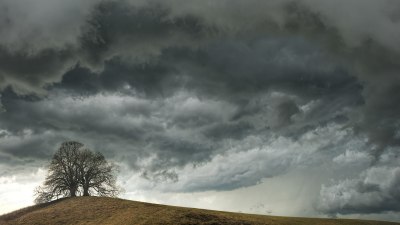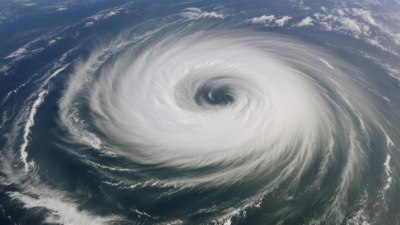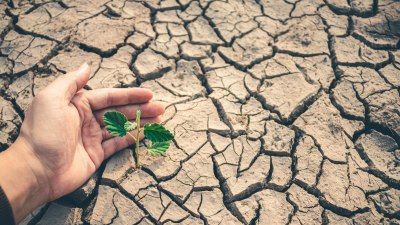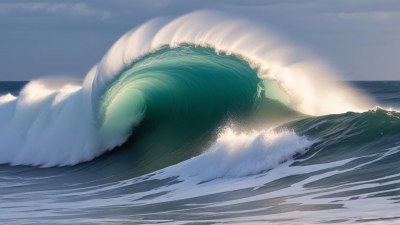The Role of Ice Shelves in Weather Changes
Explore the impact of ice shelves on global weather patterns and climate change.

The dynamics of Earth’s climate are intricately tied to the presence and behavior of ice shelves. These vast platforms of floating ice extend from the landmass of Antarctica and Greenland, acting as barriers to ice flow from the land into the ocean. In recent decades, scientists have increasingly recognized that ice shelves have significant influences not just on local weather patterns but also on global climatic conditions. This article explores the multifaceted role of ice shelves in weather changes, their interactions with ocean currents and atmospheric conditions, and the implications of their potential collapse due to climate change.
Understanding Ice Shelves
Ice shelves form when glaciers or ice streams flow from the continent and encounter the ocean, where they extend outward, forming a floating layer of ice. These platforms can vary greatly in size, with the largest ones, like the Ross Ice Shelf, covering thousands of square kilometers. Ice shelves are crucial for stabilizing the glaciers that feed into them, acting as a dam that slows down the movement of ice from the land to the sea. This stabilization is essential because if ice shelves collapse, they can accelerate the flow of glaciers into the ocean, resulting in significant contributions to sea-level rise.
Impact on Sea Levels
The melting of ice shelves contributes to rising sea levels, but the primary concern is the potential for increased glacier flow once these shelves are destabilized. When ice shelves thin and weaken due to warming ocean waters or air temperatures, they become less efficient at slowing the flow of their parent glaciers. Reports suggest that the West Antarctic Ice Sheet could contribute several meters of sea-level rise within centuries if key ice shelves fail. This potential rise has profound implications not just for coastal regions but for global weather patterns as well.
Connection to Ocean Currents
Ice shelves play a vital role in regulating ocean currents, particularly in polar regions. By creating barriers, they impact the flow of warm ocean currents beneath them, which can help maintain temperature stability. As ice shelves melt and recede, the warmer waters can rise and change the density and temperature gradients in the surrounding oceans. These changes can influence larger oceanic conveyor belts, altering weather patterns far beyond the polar regions. For example, the shift in ocean currents can lead to a redistribution of heat, impacting weather systems in Europe, North America, and beyond.
Feedback Mechanisms
The interaction between ice shelves and the atmosphere contributes to critical feedback mechanisms in the climate system. Warmer air temperatures can lead to increased melting of ice shelves, while the resultant fresh water flooding into the ocean disrupts the salinity and temperature balance of marine ecosystems. This disruption can lead to more potent storms and changes in precipitation patterns globally. The melting of ice shelves can thus initiate a feedback loop where warming leads to ice loss, which in turn leads to further warming and increased weather volatility.
Weather Patterns and Extreme Events
Recent studies indicate that the decline of ice shelves correlates with the increased frequency and intensity of extreme weather events around the globe. As the polar regions warm, the jet stream — the fast-flowing air currents in the upper atmosphere — can become disrupted, leading to prolonged weather patterns. This phenomenon results in extended periods of heatwaves, cold snaps, and heavy precipitation events, affecting agriculture, infrastructure, and ecosystems worldwide.
Research and Monitoring
Given the importance of ice shelves in understanding global climate change, extensive research and monitoring efforts are underway. Satellite technology has allowed scientists to track changes in ice shelf mass, flow velocities, and structural integrity. Programs like NASA's ICESat and ESA's CryoSat seek to provide detailed data on the state of Earth's ice. This information is vital for developing models that predict future changes and their ramifications on weather patterns and sea levels.
Policy Implications
The ongoing changes in ice shelves underscore the urgency of addressing climate change through global policy efforts. International agreements, like the Paris Accord, are aimed at limiting greenhouse gas emissions to mitigate the effects of climate change on polar ice. Furthermore, funding for research aimed at understanding and predicting the impacts of ice shelf loss is critical. Policymakers need to consider the interconnectedness of local and global systems when addressing climate adaptation and mitigation strategies.
The Future of Ice Shelves
The future of ice shelves is uncertain and hinges on global temperature trajectories. If greenhouse gas emissions continue at their current rates, the chances of significant ice shelf collapse increase dramatically. Projections indicate that with sustained warming, we could see further destabilization of ice shelves by 2100. However, if drastic measures are taken to reduce emissions and mitigate warming, the outcomes could be significantly different, allowing for the preservation of these vital components of our climate system.
The role of ice shelves in weather changes is profound and multifaceted. As critical components of Earth's climate system, they influence sea levels, ocean currents, and weather patterns on a global scale. The impacts of their destabilization cannot be underestimated, as they pose significant risks to livelihoods, ecosystems, and economies worldwide. Understanding and monitoring these icy sentinels remain paramount as humanity grapples with the challenges of climate change. Efforts to curb emissions and protect polar ice will be crucial in shaping a sustainable future, where the delicate balance of our planet's climate can be maintained for generations to come.











